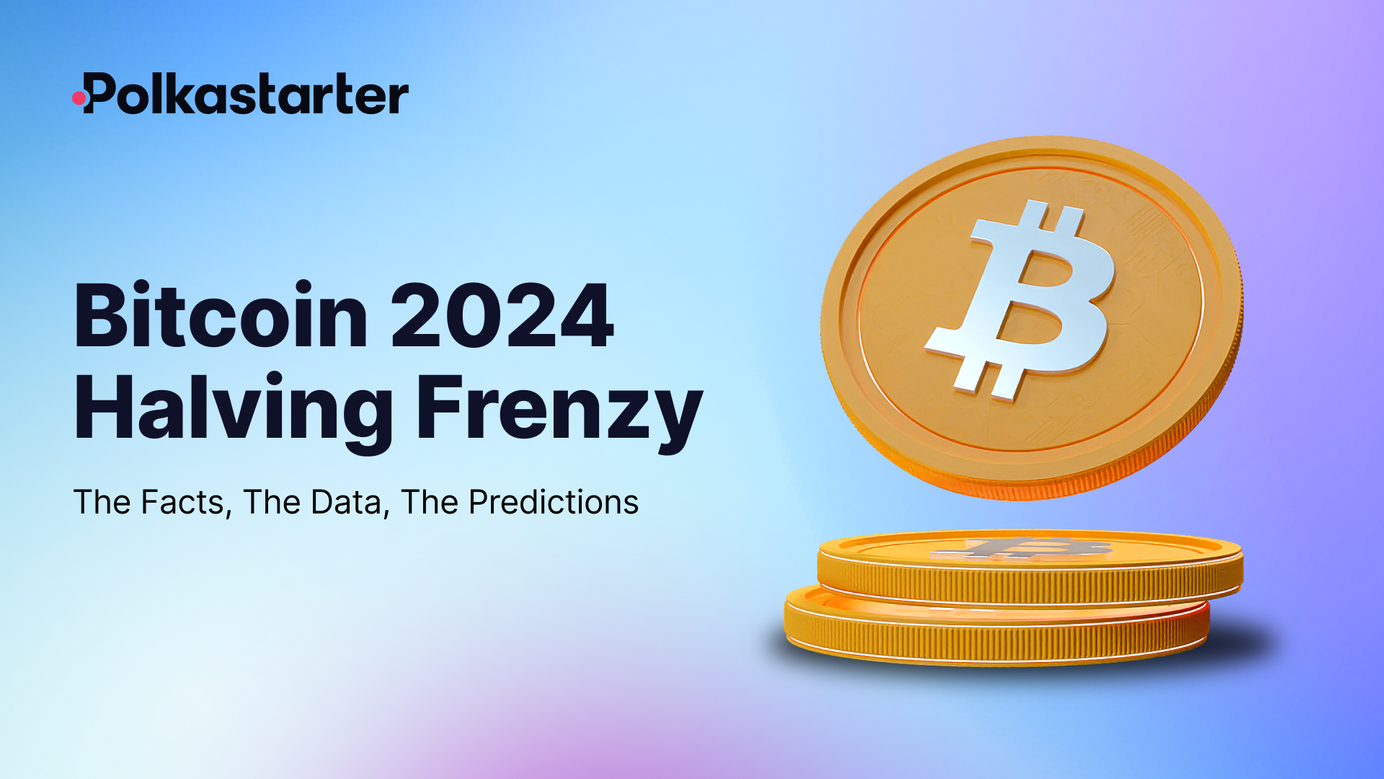
Bitcoin 2024 Halving Frenzy: The Facts, the Data, the Predictions
The next Bitcoin halving is reaching us around April 20, 2024
The next Bitcoin halving is happening this week! 😱 You might have heard a prediction (or a lot of predictions…) as the crypto space seems to be living and breathing ‘halving’ at the moment.
What is this buzz all about? Why is Bitcoin halving such a big deal at all, and where may we be heading in the aftermath?
If you were asking yourself these burning questions, keep reading.
In this blog, we are going to explore:
- What is the Bitcoin halving, as a part of the Bitcoin supply mechanism;
- The importance of halving for the entire Bitcoin ecosystem and, in consequence, the whole crypto space;
- Possible post-halving scenarios, based on the past halving data.
Let’s go!
What is the Bitcoin Halving?
Happening roughly every four years, the halving cuts in half the amount of Bitcoin "miners" can earn each day for validating transactions on the BTC network.
When Bitcoin was first mined in 2009, the miner would earn 50 BTC for mining one block. In 2012, this was halved to 25 BTC, and so on. The reward after the upcoming 4th halving will be 3.125 BTC.
The next Bitcoin halving will happen when the Block Height reaches 840,000, which is forecasted for April 20, 2024. Scheduled every 210,000 blocks and with miners adding a new block every 10 minutes, halvings occur approximately every 4 years according to Satoshi Nakamoto's design and Bitcoin Whitepaper.
You can follow the blocks’ creation on the Bitcoin Block Explorer.
Why is Bitcoin halving important?
The downsizing of mining rewards significantly impacts the entire Bitcoin economy and market dynamics. There's a direct correlation between the market health of BTC (and ETH) and the general sentiment in the altcoin market, so every event possibly disruptive to Bitcoin affects the crypto market as a whole. That makes everyone in crypto interested in halving, even if their BTC holding equals to none.
Let’s go back to the origins of Bitcoin:
“As computers get faster and the total computing power applied to creating bitcoins increases, the difficulty increases proportionally to keep the total new production constant. Thus, it is known in advance how many new bitcoins will be created every year in the future” - Satoshi Nakamoto
Bitcoin’s supply is fixed at 21,000,000, and around 94% of the tokens are already in circulation.
Over the last few years, it has become increasingly costly to stay atop the Bitcoin mining game. The days when mining BTC at home on your personal computer was profitable are long gone.
The halving policy was written into Bitcoin’s mining algorithm to balance inflation by preserving scarcity. In theory, the reduction in the pace of issuance leads to a price increase if demand stays the same. At the moment, Bitcoin has an inflation rate of less than 2%, which will decrease with further halvings.
What happens when the rewards disappear?
As pseudonymous independent researcher Hasu put it, to keep the BTC network operating, there are 2 components that Bitcoin’s ledger state needs to answer: ‘who owns what, and when they own it’. That is only possible if the miners keep mining, and are incentivized not to cheat.
When the rewards dwindle towards zero in the decades to come, it could potentially destabilize the economic incentives underlying Bitcoin’s security. Ideally, the increase in the Bitcoin price should cover up for the ‘loss’ in mining amount. If not, smaller miners may struggle to remain profitable, leading to the centralization of the miners’ pool and a less secure network.
Once the last BTC is mined in 2140, for the network to keep being prosperous, the sole transaction fees would have to cover the cost of running the machine, performing the computation, and bring profit to the miner. Sustaining profitable mining operations is only possible if the price remains high enough.
We may yet be too far in time to realistically confront the challenge. However, the initiators of Bitcoin have long thought of the implications, at the time BTC was just a whitepaper concept. Here you can find the original emails concerning the Bitcoin setup exchanged between the Cryptography group members (including Satoshi) in November 2008.
What are the predictions for the post-4th Bitcoin halving?
While the year 2140—when the last Bitcoin is scheduled to be mined—is still a long way off, let’s focus on more immediate predictions for the coming days and months.
Halving may bring opportunities and challenges to crypto exchanges. A trading frenzy.
Historically, there is a lot of price volatility leading up to and after a halving. However, the price of Bitcoin typically ends up significantly higher a few months later. The charts showed Bitcoin prices took between 12 to 18 months to peak post-halving.
How well can we predict the future? Let’s answer this one with an analogy.
Do you know the exact time of the halving? Theoretically, we can simulate it quite well. According to the Bitcoin Whitepaper, one block is minted every 10 minutes, and halving occurs every 210,000 blocks. That is all set in code. In reality, there are multiple calculators on the market, actively predicting when the halving will happen. They all show different timings.
At last, let us wish you a happy halving, and remind you that none of the texts posted on the Polkstarter blog should be treated as financial advice. 🙏
About Polkastarter
Polkastarter is the leading early-stage fundraising protocol, enabling web3’s most innovative projects to kick-start their journey and grow their communities. Polkastarter allows its users to make research-based decisions to participate in high-potential public sales and be early to the future of web3.
Website | X | Discord | Telegram | Telegram Announcements | YouTube
Polkastarter Blog - Latest Polkastarter News & Updates Newsletter
Join the newsletter to receive the latest updates in your inbox.





